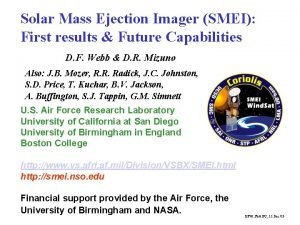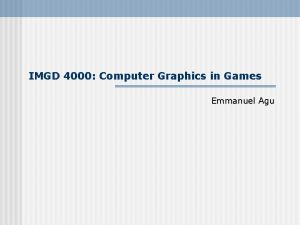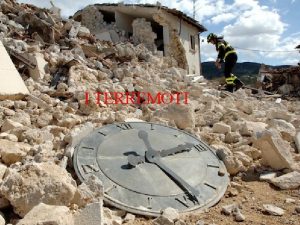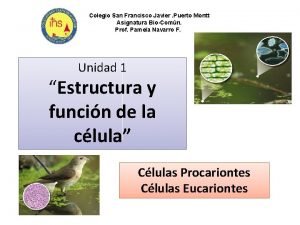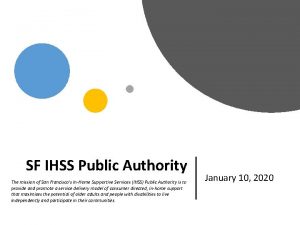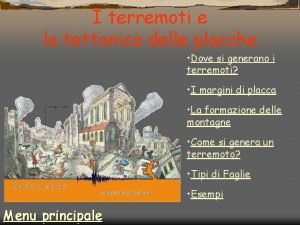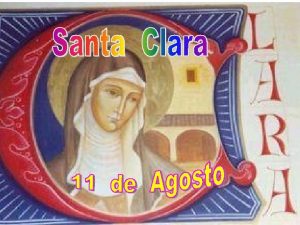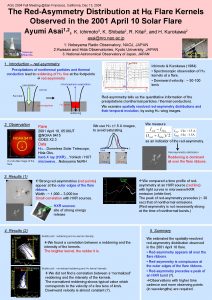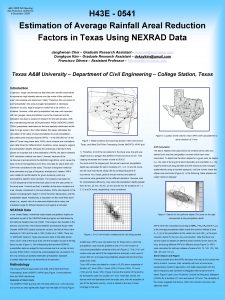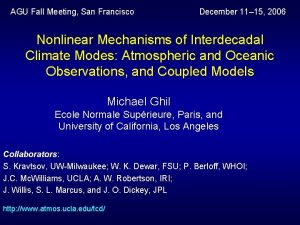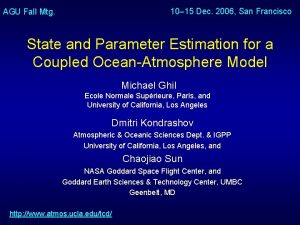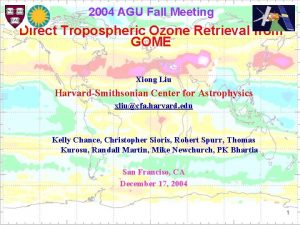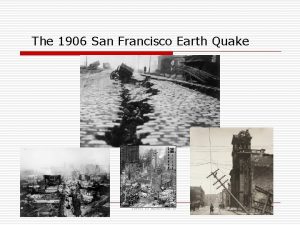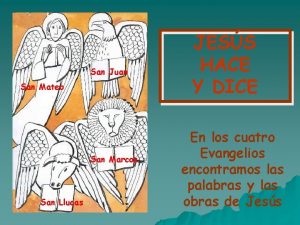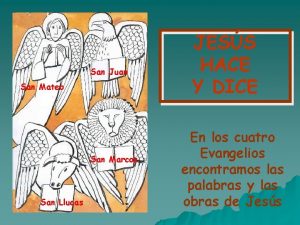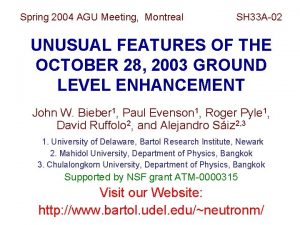Fall 2004 AGU Meeting San Francisco SH 31













![Loss-cone precursors Nagashima et al. [1992], Ruffolo [1999] Intensity deficit confined in a cone Loss-cone precursors Nagashima et al. [1992], Ruffolo [1999] Intensity deficit confined in a cone](https://slidetodoc.com/presentation_image/1fd3f8afc39f5745195b70b69aff4582/image-14.jpg)



- Slides: 17

Fall 2004 AGU Meeting, San Francisco SH 31 B-07 GROUND-BASED COSMIC RAY DETECTORS FOR SOLAR-TERRESTRIAL RESEARCH AND SPACE WEATHER FORECASTING John W. Bieber 1, John Clem 1, Paul Evenson 1, Kazuoki Munakata 2, and Roger Pyle 1 1. University of Delaware, Bartol Research Institute, Newark 2. Shinshu University, Physics Department, Matsumoto, Japan Supported by NSF grant ATM-0000315 Visit our Website: http: //neutronm. bartol. udel. edu/

OBSERVATION OF COSMIC RAYS WITH GROUND-BASED DETECTORS • Ground-based detectors measure byproducts of the interaction of primary cosmic rays (predominantly protons and helium nuclei) with Earth’s atmosphere • Two common types: – Neutron Monitor Typical energy of primary: ~1 Ge. V for solar cosmic rays, ~10 Ge. V for Galactic cosmic rays – Muon Detector / Hodoscope Typical energy of primary: ~50 Ge. V for Galactic cosmic rays (surface muon detector)

NEUTRON MONITORS • Older type “BP 28” – proportional counter filled with BF 3: n + 10 B → α + 7 Li • Modern type – counter filled with 3 He: n + 3 He → p + 3 H • Both types sometimes called “NM 64” Neutron Monitor in Nain, Labrador Construction completed November 2000


Spaceship Earth is a network of neutron monitors strategically deployed to provide precise, real-time, 3 dimensional measurements of the cosmic ray angular distribution: • 11 Neutron Monitors on 4 continents • Multi-national participation: U. S. A. , Russia, Australia, Canada

SPACESHIP EARTH VIEWING DIRECTIONS • Optimized for solar cosmic rays • 9 stations view equatorial plane at 40 -degree intervals • Thule and Mc. Murdo provide crucial 3 -dimensional perspective Circles denote station geographical locations. Average viewing directions (squares) and range (lines) are separated from station geographical locations because particles are deflected by Earth's magnetic field. STATION CODES IN: Inuvik, Canada FS: Fort Smith, Canada PE: Peawanuck, Canada NA: Nain, Canada MA: Mawson, Antarctica AP: Apatity, Russia NO: Norilsk, Russia TB: Tixie Bay, Russia CS: Cape Schmidt, Russia TH: Thule, Greenland MC: Mc. Murdo, Antarctica

RELATIVISTIC SOLAR PARTICLES OBSERVED BY NEUTRON MONITORS: OCTOBER 28, 2003 (a) Solar neutron increase at Tsumeb, Namibia (b) Solar protons at several high-latitude monitors (c) Omnidirectional intensity with model fit (d) Derived injection profile at Sun For details see: • Clem et al. , SH 13 A-1136, this conference • Bieber et al. , Geophys. Res. Lett. (special issue on Nov. Oct 2003 solar activity), in press.

NAGOYA-TYPE MUON DETECTOR • Coincidences between top and bottom layers provide information on incident direction of cosmic ray primary • A single detector measures intensity in several directional channels (e. g. , 17 at Nagoya)

PROTOTYPE 2 x 2 m MUON DETECTOR IN SÃO MARTINHO, BRAZIL

SKY COVERAGE OF MUON DETECTOR NETWORK • Blue symbols show viewing directions (median rigidity) covered by existing network • Red symbols show new viewing directions from planned enlargement of the network • Curves show the range of viewing directions for the central 80% of detector energy response

A SAMPLE APPLICATION: REMOTE SENSING SOLAR WIND DISTURBANCES • B×Gradient anisotropy : IMF unit vector ecliptic plane : density gradient vector : Larmor radius ~0. 2 AU for muons ーG⊥ pointing toward CME center

DETERMINATION OF ICME GEOMETRY FROM COSMIC RAYS • Left: Measured and modeled cosmic ray gradients during an ICME on October 29, 2003 • Right: ICME geometry inferred from cylinder model • Figures adapted from Kuwabara et al. , Geophys. Res. Lett. , 31, L 19803, 2004. • See also Kuwabara et al. , SH 53 B-0331, this conference.

MUON HODOSCOPES: A DENSE DIRECTIONAL NETWORK • Newer technologies permit fine scale mapping of cosmic ray anisotropies • Map shows view directions for Mt. Norikura, Japan (red) and Project GRAND, Notre Dame Univ (blue)
![Losscone precursors Nagashima et al 1992 Ruffolo 1999 Intensity deficit confined in a cone Loss-cone precursors Nagashima et al. [1992], Ruffolo [1999] Intensity deficit confined in a cone](https://slidetodoc.com/presentation_image/1fd3f8afc39f5745195b70b69aff4582/image-14.jpg)
Loss-cone precursors Nagashima et al. [1992], Ruffolo [1999] Intensity deficit confined in a cone

A COSMIC RAY LOSS CONE OBSERVED ON OCTOBER 28, 2003 • Mt Norikura field of view over a 6 -hr period prior to storm sudden commencement. TOP: Observations. BOTTOM: Model • Blue indicates lower intensity; Red indicates higher intensity • Figures from Munakata et al. , Geophys. Res. Lett. (special issue on Nov-Oct 2003 solar activity), in press. • See also Munakata et al. , SH 53 B-0322, this conference.

SPACE WEATHER APPLICATIONS • Numerous stations provide realtime displays of raw count rate data • Univ Delaware / Bartol site (left) provides higher level data, including realtime displays of cosmic ray – Density – Flow direction – Pitch angle distribution http: //neutronm. bartol. udel. edu/spaceweather/ • For details see Pyle et al. , SH 41 A 1074, this conference

SUMMARY • Ground-based cosmic ray detectors remain the state-of-the-art instrumentation for studying highenergy (>1 Ge. V) cosmic rays • The data are of use both for basic space physics research and for space weather forecasting and specification • Strategically sited new instruments are needed to fill gaps in sky coverage, but … • Much can also be gained by linking existing instruments in coordinated realtime networks
 Msei usfca
Msei usfca Greencam obs
Greencam obs Emmanuel agu
Emmanuel agu Fosse oceaniche
Fosse oceaniche Cardiac rehabilitation near south san francisco
Cardiac rehabilitation near south san francisco Museum of modern art san francisco
Museum of modern art san francisco Que es el aparato de golgi y cual es su funcion
Que es el aparato de golgi y cual es su funcion San francisco de asis nueva imperial
San francisco de asis nueva imperial Sf ihss
Sf ihss Lina mara
Lina mara Issa san francisco
Issa san francisco Fdic san francisco
Fdic san francisco Tracheal shave san francisco
Tracheal shave san francisco Los angeles napa valley
Los angeles napa valley Sf microsoccer
Sf microsoccer Padre coll
Padre coll Faglia san francisco
Faglia san francisco Santa clara y san francisco de asis
Santa clara y san francisco de asis

